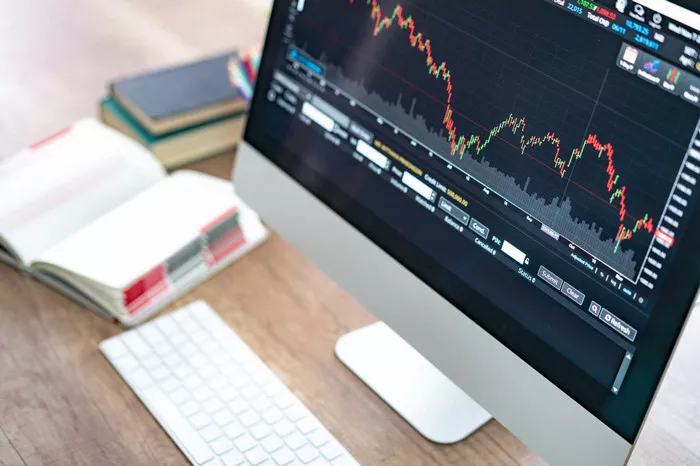Leverage is a fundamental aspect of the foreign exchange (forex) market, allowing traders to control large positions with a relatively small amount of capital. This financial tool can significantly amplify both gains and losses, making it a powerful, yet risky, instrument in the world of forex trading. Understanding the various uses of leverage can help traders make informed decisions and effectively manage their risk.
Understanding Leverage in Forex Trading
Definition of Leverage
Leverage in forex trading refers to the ability to use borrowed capital to increase the potential return on investment. It is usually expressed as a ratio, such as 50:1, 100:1, or even higher. This means that with a leverage of 100:1, a trader can control $100,000 worth of currency with just $1,000 of their own money.
Importance of Leverage
Leverage is crucial in forex trading because currency price changes are typically very small. Without leverage, the returns on investment would be minimal, making it less attractive to investors. Leverage magnifies these small price movements, allowing traders to earn significant profits from relatively small market changes.
Major Uses of Leverage in Foreign Exchange
1. Enhancing Potential Returns
Amplifying Gains
The primary use of leverage in forex trading is to enhance potential returns. By using leverage, traders can control larger positions with a smaller amount of capital, thereby amplifying their gains. For example, if a trader uses a leverage of 100:1, a 1% move in the currency pair could result in a 100% return on their invested capital.
Example
Consider a trader who invests $1,000 in a forex position with a leverage of 100:1. This allows them to control $100,000 worth of currency. If the currency pair moves by 1% in the trader’s favor, the value of the position increases by $1,000, effectively doubling the initial investment.
See Also: 5 Reasons Not To Trade Forex On Weekends
2. Accessing Larger Positions
Increasing Market Exposure
Leverage allows traders to access larger positions than they could with their own capital alone. This increased market exposure can lead to higher potential profits. For institutional investors and professional traders, leverage enables them to execute large trades that can significantly impact the market.
Example
An institutional investor with $1 million in capital can use a leverage of 100:1 to control positions worth $100 million. This ability to access larger positions provides the investor with greater market influence and the potential for substantial profits.
3. Diversifying Investment Portfolios
Spreading Risk
Leverage enables traders to diversify their investment portfolios by allocating their capital across multiple positions. By spreading their investments, traders can reduce their overall risk and increase the chances of profiting from different market movements.
Example
A trader with $10,000 in capital can use leverage to control $1 million worth of currency positions spread across various currency pairs. This diversification helps mitigate the risk of losses from a single position and provides multiple opportunities for profit.
4. Hedging Existing Positions
Reducing Risk
Leverage can be used to hedge existing positions in a trader’s portfolio. By taking an opposite position with leveraged funds, traders can protect their investments from adverse market movements. This strategy is commonly used by businesses and investors to manage currency risk.
Example
A company expecting a payment in a foreign currency might use leverage to hedge against potential currency depreciation. By taking a leveraged short position in the foreign currency, the company can offset potential losses if the currency value declines.
5. Capital Efficiency
Optimal Use of Funds
Leverage allows traders to use their capital more efficiently. Instead of tying up large amounts of money in a single position, traders can use leverage to control multiple positions with a smaller initial investment. This efficient use of capital can lead to better overall portfolio performance.
Example
A trader with $50,000 can use leverage to control positions worth $5 million. This capital efficiency enables the trader to allocate their funds to other investment opportunities, maximizing their potential returns.
6. Short-Term Trading Strategies
Enhancing Day Trading and Scalping
Leverage is particularly useful for short-term trading strategies, such as day trading and scalping. These strategies rely on small price movements and require significant capital to be effective. Leverage allows traders to amplify these small gains and achieve substantial profits within a short period.
Example
A day trader using leverage can open and close multiple positions within a single trading day. By leveraging their capital, the trader can profit from minor price fluctuations and accumulate significant gains by the end of the day.
7. Speculative Trading
Profiting from Market Volatility
Leverage is often used for speculative trading, where traders aim to profit from market volatility and short-term price movements. By using leverage, traders can take advantage of price swings and achieve higher returns on their speculative trades.
Example
A speculative trader anticipating a major economic announcement might use leverage to take a large position in a currency pair expected to be affected by the news. If the market moves as predicted, the leveraged position can result in substantial profits.
8. Enhancing Trading Flexibility
Adapting to Market Conditions
Leverage provides traders with greater flexibility to adapt to changing market conditions. By adjusting their leverage levels, traders can manage their risk exposure and optimize their trading strategies based on current market trends.
Example
In a highly volatile market, a trader might reduce their leverage to minimize risk. Conversely, in a stable market with clear trends, the trader might increase leverage to maximize potential returns. This flexibility allows traders to tailor their strategies to different market environments.
Managing Risks Associated with Leverage
Understanding the Risks
While leverage can amplify profits, it also magnifies losses. It is essential for traders to understand the risks associated with leverage and implement effective risk management strategies to protect their investments.
Risk Management Strategies
Setting Stop-Loss Orders
One of the most common risk management strategies is setting stop-loss orders. These orders automatically close a position when it reaches a predetermined loss level, helping traders limit their potential losses.
Example
A trader using leverage sets a stop-loss order at 2% below the entry price. If the market moves against the trader and the position loses 2%, the stop-loss order will automatically close the position, preventing further losses.
Using Proper Position Sizing
Position sizing is another crucial aspect of risk management. Traders should determine the appropriate position size based on their risk tolerance and leverage levels to avoid excessive exposure to a single trade.
Example
A trader with a risk tolerance of 1% of their capital per trade should adjust their position size accordingly. By using leverage, the trader can control larger positions while still adhering to their risk tolerance.
Monitoring and Adjusting Leverage
Traders should continuously monitor their leveraged positions and adjust their leverage levels based on market conditions and their risk management strategy. This proactive approach helps traders maintain control over their investments and minimize potential losses.
Conclusion
Leverage is a powerful tool in forex trading, offering numerous benefits such as enhancing potential returns, accessing larger positions, diversifying portfolios, hedging risks, and more. However, it also comes with significant risks that traders must carefully manage. By understanding the various uses of leverage and implementing effective risk management strategies, traders can maximize the benefits of leverage while minimizing its potential downsides.
Related topics:



























